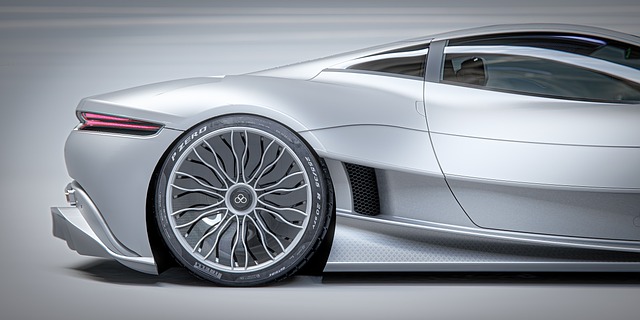
Moving away from gas-powered cars is crucial in preventing catastrophic consequences, even though there is no direct link between a specific ice shelf decline in Antarctica and Americans preference for electric vehicles. Prominent US car manufacturers face unexpected challenges in embracing an all-electric future due to their significant influence on global emissions. If these companies retract from their commitments to electric vehicles, it would have significant repercussions for the planet, as the Earth has already experienced a warming of 1 degree.
Despite there being no direct link between the decline of a specific ice shelf in Antarctica and the general preference towards electric vehicles, it is evident that moving away from gas-powered cars is essential in preventing catastrophic consequences. Due to their significant influence on global emissions, several prominent car manufacturers in the US face unexpected challenges in embracing an all-electric future. The repercussions for the planet would be significant if these companies were to retract from their commitments to electric vehicles. Notably, the Earth has already experienced a warming of 1 degree.
Since the Industrial Revolution, the burning of fossil fuels has caused a significant increase in global temperatures. The current warming trend, which stands at 1 degree Celsius or 2 degrees Fahrenheit, has the potential to result in alarming consequences such as rising sea levels, melting glaciers, and dangerously high temperatures. To mitigate these risks, the Paris Agreement was established in 2015 with the participation of almost every country. This agreement sets specific emission limits as a means of averting catastrophic scenarios. Ideally, we should strive to limit global warming to 1.5 degrees Celsius above pre-industrial levels by the end of this century. Nonetheless, if achieving this target proves difficult, our primary goal should be to keep the warming below 2 degrees Celsius.
With the way things are going, it is uncertain if we will be able to stay below 2 degrees. The calculations involving these two numbers, which every business pledge and sustainability promise are based on, are why automakers have committed to going all-electric by a certain future date. General Motors plans to make the shift by 2035, while Mercedes-Benz aims for 2030 in most major markets. Volkswagen has set a target for the 2030s, and other car companies are also working to reduce emissions by offering a combination of hybrids or hydrogen vehicles.
What happens if car companies decide to push back or cancel electrification goals—or if regulations are loosened to allow them to? The world’s leading scientific body on climate change has set targets for carbon emissions to mitigate the impacts of global warming. To have a 50% chance of keeping warming below 1.5 degrees Celsius, we can only emit 500 billion metric tons more carbon dioxide. For the 2 degrees target, the remaining carbon budget is 1,350 billion metric tons. Once we exceed these limits, the chances of averting disaster decline rapidly.
The importance of transitioning to electric vehicles is evident when considering the significant amount of emissions generated by gas-powered cars. While the topic of climate change can sometimes be overwhelming, understanding the scale of the issue is crucial. Just by selling gas-powered cars alone, some U.S. carmakers are emitting a substantial amount of greenhouse gases each year. This emphasizes the urgency of moving towards a zero-emission future, as their challenges in making this transition become even more concerning. Taking gasoline- and diesel-powered cars off the road is a crucial step in ensuring that we stay within the global carbon budget. Global transport generates approximately one-fifth of the world’s greenhouse gas emissions, with gas-powered cars responsible for 75% of that total.
Transportation is currently the number one source of carbon emissions in the U and the United States is one of the world’s top polluters, contributing significantly to these emissions. These numbers have been influenced by some of America’s most historic brands, such as General Motors and Ford. General Motors, which held the biggest market share for cars sold in the U last year, and Ford, which held the third-largest share, have played a prominent role in shaping these figures. In corporate climate-speak, emissions from big automakers are divided into three categories referred to as “scopes.”
Scope 1 emissions refer to emissions from sources that a business owns directly, such as company gas-powered cars. On the other hand, Scope 2 emissions are emissions that come from the energy that a company purchases to power its operations. These emissions are usually easy for a business to calculate and include in their corporate sustainability report.
The last category, Scope 3 emissions, comprises emissions that are generated by factors that the company has no control over. This includes emissions from business travel, employee commuting, and customer use of a product or service, such as cars driven out of a dealer’s lot. Calculating this portion of Scope 3 emissions can be particularly challenging for many industries.
Automakers have a simple math problem to solve when it comes to greenhouse gas emissions. They need to consider the emissions their cars produce, how many cars they sell, and the average distance each car is driven throughout its lifespan. Despite this straightforward calculation, automakers are not eager to be transparent about their emissions. Many of the world’s largest polluters, including carmakers, are hesitant to disclose their Scope 3 emissions, which often surpass Scope 1 and 2 emissions. It is important to note that there are no federal regulations requiring companies to reveal this information. For example, in its sustainability reports, Mercedes Benz only discloses the Scope 1 and 2 emissions from its vehicles, leaving out the Scope 3 emissions.
Polestar, a notable company, includes a clear breakdown of its emissions in its sustainability report. This information is placed near the top to emphasize its importance. The pressure from the public and investors to address the climate crisis has increased, prompting many large companies to reveal their significant emissions. The recent reports from automakers are particularly startling. For example, in 2022, Ford disclosed that the 4.2 million cars it sold globally resulted in approximately 319,568,185 metric tons of CO2 equivalents (CO2e) emitted as Scope 3 emissions.
Last year, Ford sold cars globally that will, throughout their lifetimes, produce more greenhouse gas emissions than Taiwan’s annual emissions. Similarly, GM announced that the cars it sold in 2022 had Scope 3 emissions totaling 208.6 million metric tons of CO2e. This is nearly the same amount emitted by Ukraine last year. It is important to note the enormity of these figures. For instance, the combined annual sales of Ford and GM alone surpassed the greenhouse gas emissions of Vietnam’s 97 million inhabitants last year.
A report issued last year estimated that the world’s carmakers are under-reporting their Scope 3 emissions by as much as 50%, suggesting that the actual number of emissions is even higher. This indicates that the impact of car manufacturers on greenhouse gas emissions is more significant than what is currently known. When considering the fact that one or two companies are responsible for releasing hundreds of millions of tons of greenhouse gases into the atmosphere each year, it becomes evident that the 500 billion-ton carbon budget may not be as substantial as initially perceived. Even if all automakers were to switch to electric vehicles (EVs) tomorrow, it would not eliminate emissions entirely. This is due to the fact that electric vehicles still have associated emissions, which depend on the type of energy used to power the grid they are connected to. Additionally, the production of EVs and batteries also contributes to emissions. Therefore, while EVs can help reduce emissions compared to traditional vehicles, they are not a solution that completely eliminates carbon emissions.
Many auto companies are making significant strides in reducing emissions by improving efficiency in gas-powered cars and rolling out hybrid models. Ford and GM are important players in the global decarbonization efforts. The products they manufacture have a massive impact on the world’s carbon budgets. If they can successfully eliminate the bulk of their Scope 3 emissions, as their EV transition timelines aim to do, it would have significant consequences for reducing carbon emissions.
In last year’s announcement, GM predicted that it would lower its Scope 3 emissions by nearly 80% by the mid-2030s. Their plan involves ramping up electric vehicle sales over the next decade and ultimately transitioning to an all-electric fleet by 2035. The main strategy for achieving this reduction in emissions is to eliminate gas-powered cars and replace them with electric ones.
It should be noted that GM’s solution is a long-term one, as there are currently millions of gas cars on the road that will continue to be in service for many years to come. This presents a challenge in finding effective solutions for reducing emissions from these vehicles.
However, there have been recent developments in the industry that may affect the progress of this transition. Ford, for instance, has announced a pause in some of its significant investments in electric vehicle technology. This includes a battery factory in Kentucky.
On the other hand, GM’s CEO Mary Barra has reassured investors that their commitment to the 2035 target remains strong. However, they will be revisiting certain sales targets and implementing cost-cutting measures in other areas to ensure their sustainability goals are still met.
Complaints from automakers and car dealers about the lack of sales for electric vehicles create a doom-and-gloom atmosphere. Despite proclaiming support for the electric vehicle transition and environmental preservation, the auto industry argues that the pace of new policies and regulations is too rapid. They request leniency from politicians, asking to continue selling gas-powered cars for a little longer. It is worth noting that Ford, for instance, achieved record-breaking EV sales in November, a trend seen throughout the industry. Additionally, carmakers flood the market with expensive electric SUVs instead of diversifying into more affordable vehicle options that consumers desire.
Continued feet-dragging introduces a new dimension to the climate calculation: time. Automakers like GM and Ford, who primarily generate profits from gas-powered trucks and SUVs, are seemingly slowing down their EV goals. It is important to note that these companies do not make most of their profits from economy cars. According to Chris Harto, a senior policy analyst at Consumer Reports, automakers are caught in a Catch-22 situation. They cannot make significant profits on electric vehicles at low volume, but in order to reach high volume, they have to lower prices. This presents a challenging leap of faith. Automakers will need to fully commit to electric vehicles despite incurring losses on the EVs currently being sold.
The levels of runaway warming that we are currently witnessing could be accelerated due to the collapse of critical ecosystems on Earth. Among these ecosystems are the Antarctic ice sheets, which prevent the immense glaciers from melting into the ocean and causing catastrophic rises in sea levels. Additionally, the world’s permafrost plays a crucial role in trapping significant amounts of CO2, but its stability is at risk. When the ground becomes too warm, this CO2 is released into the atmosphere, further contributing to global warming. The urgency to lower carbon emissions during this decade and the next has been emphasized repeatedly by scientists worldwide.
Companies like Ford and GM continue on a business-as-usual clip, spewing gargantuan amounts of greenhouse gas emissions into the atmosphere with the cars they sell. If the world continues warming at its current rate, we could soon reach a very bad turning point. Automakers, however, like to pretend that there is still time to wait for them to stop stalling on electric cars. The truth is, when it comes to their incredibly outsize individual emissions, we don’t have that luxury. Their shareholders may not like to hear this, but it is a fact.



